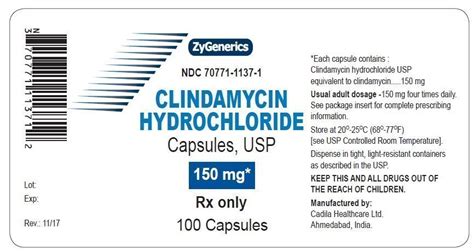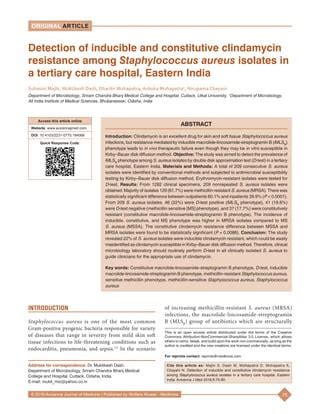Intro
Discover Clindamycin drug information, including uses, side effects, and interactions. Learn about this antibiotics benefits and risks for bacterial infections, acne, and more, with dosage and precaution guidelines.
Clindamycin is a medication that has been widely used to treat various bacterial infections. It belongs to the class of antibiotics known as lincosamides, which work by inhibiting the growth of bacteria. The importance of clindamycin lies in its effectiveness against a range of bacterial infections, including skin and soft tissue infections, respiratory tract infections, and infections of the female reproductive organs. Understanding the uses, benefits, and potential side effects of clindamycin is crucial for patients who are prescribed this medication. In this article, we will delve into the world of clindamycin, exploring its mechanisms, applications, and considerations for use.
The discovery of clindamycin dates back to the 1960s, and since then, it has become a staple in the treatment of bacterial infections. Its broad-spectrum activity makes it a valuable option for treating infections caused by both aerobic and anaerobic bacteria. Clindamycin's ability to penetrate into tissues and cells effectively contributes to its efficacy in treating infections that are difficult to reach with other antibiotics. Moreover, its availability in various forms, including capsules, oral suspensions, and topical gels, makes it a versatile treatment option for different types of infections.
The mechanism of action of clindamycin involves binding to the 50S subunit of the bacterial ribosome, which inhibits protein synthesis. This action is bacteriostatic, meaning it stops the growth of bacteria, allowing the immune system to clear the infection. Clindamycin is particularly effective against Gram-positive cocci, including Staphylococcus aureus and Streptococcus pyogenes, as well as anaerobic bacteria such as Bacteroides fragilis. Its effectiveness against these pathogens makes it a first-line treatment for various infections, including acne, pneumonia, and pelvic inflammatory disease.
Benefits and Uses of Clindamycin

Clindamycin offers several benefits that make it a preferred choice for treating bacterial infections. One of the significant advantages of clindamycin is its ability to treat infections caused by bacteria that are resistant to other antibiotics. Its broad-spectrum activity also makes it effective against a wide range of bacterial pathogens. Additionally, clindamycin's ability to penetrate into bone and soft tissues makes it an ideal choice for treating osteomyelitis and other deep-seated infections.
The uses of clindamycin are diverse and include the treatment of skin and soft tissue infections, such as cellulitis and abscesses. It is also effective against respiratory tract infections, including pneumonia and bronchitis. In the treatment of female reproductive tract infections, clindamycin is used to treat pelvic inflammatory disease and bacterial vaginosis. Furthermore, its application in the treatment of acne and other skin conditions has made it a popular choice among dermatologists.
Administration and Dosage
The administration and dosage of clindamycin depend on the type and severity of the infection being treated. For adults, the typical dosage of clindamycin is 150-300 mg every 6 hours, while for children, the dosage is based on their weight. It is essential to complete the full course of treatment, even if symptoms improve before finishing the medication, to ensure that the infection is fully cleared.Side Effects and Considerations

While clindamycin is generally well-tolerated, it can cause side effects, some of which can be severe. Common side effects include nausea, vomiting, diarrhea, and abdominal pain. In some cases, clindamycin can cause more serious side effects, such as pseudomembranous colitis, which is a potentially life-threatening condition. It is essential to monitor for signs of this condition, including severe diarrhea and abdominal cramps, and to seek medical attention immediately if they occur.
Another consideration with clindamycin is its potential for interactions with other medications. It can interact with certain medications, such as erythromycin and other macrolide antibiotics, which can increase the risk of side effects. Additionally, clindamycin can affect the efficacy of certain medications, such as warfarin, which requires careful monitoring of international normalized ratio (INR) levels.
Precautions and Warnings
Clindamycin is contraindicated in patients with a history of hypersensitivity to the medication or other lincosamides. It is also contraindicated in patients with inflammatory bowel disease, such as ulcerative colitis or Crohn's disease, as it can exacerbate these conditions. Caution should be exercised when using clindamycin in patients with liver or kidney disease, as it can affect the metabolism and excretion of the medication.Resistance and Future Directions

The increasing resistance to clindamycin and other antibiotics is a growing concern. The overuse and misuse of antibiotics have contributed to the emergence of resistant bacteria, making it challenging to treat infections effectively. To combat this issue, it is essential to use antibiotics judiciously and to develop new antibiotics and treatment strategies.
In recent years, there has been a focus on developing new antibiotics and improving existing ones. Researchers are exploring new mechanisms of action and novel targets for antibiotic development. Additionally, the use of combination therapy, where multiple antibiotics are used together, has shown promise in treating resistant infections.
Current Research and Developments
Current research on clindamycin is focused on improving its efficacy and reducing its side effects. Studies are being conducted to develop new formulations of clindamycin, such as topical creams and gels, which can improve its delivery and penetration into tissues. Additionally, researchers are investigating the use of clindamycin in combination with other antibiotics to treat resistant infections.Conclusion and Final Thoughts

In conclusion, clindamycin is a valuable antibiotic that has been used to treat various bacterial infections. Its broad-spectrum activity, ability to penetrate into tissues, and effectiveness against resistant bacteria make it a preferred choice for many healthcare professionals. However, its use requires careful consideration of potential side effects, interactions with other medications, and the risk of resistance.
As we move forward in the fight against bacterial infections, it is essential to continue developing new antibiotics and improving existing ones. The judicious use of antibiotics, combined with good hygiene practices and infection control measures, can help reduce the spread of resistant bacteria and ensure that antibiotics like clindamycin remain effective for years to come.
We invite you to share your thoughts and experiences with clindamycin in the comments section below. Have you been prescribed clindamycin for a bacterial infection? What were your experiences with the medication? Your feedback can help others understand the benefits and potential side effects of clindamycin.
What is clindamycin used for?
+Clindamycin is used to treat various bacterial infections, including skin and soft tissue infections, respiratory tract infections, and infections of the female reproductive organs.
What are the common side effects of clindamycin?
+Common side effects of clindamycin include nausea, vomiting, diarrhea, and abdominal pain. In some cases, it can cause more serious side effects, such as pseudomembranous colitis.
Can clindamycin be used to treat viral infections?
+No, clindamycin is an antibiotic and is only effective against bacterial infections. It should not be used to treat viral infections, such as the common cold or flu.
